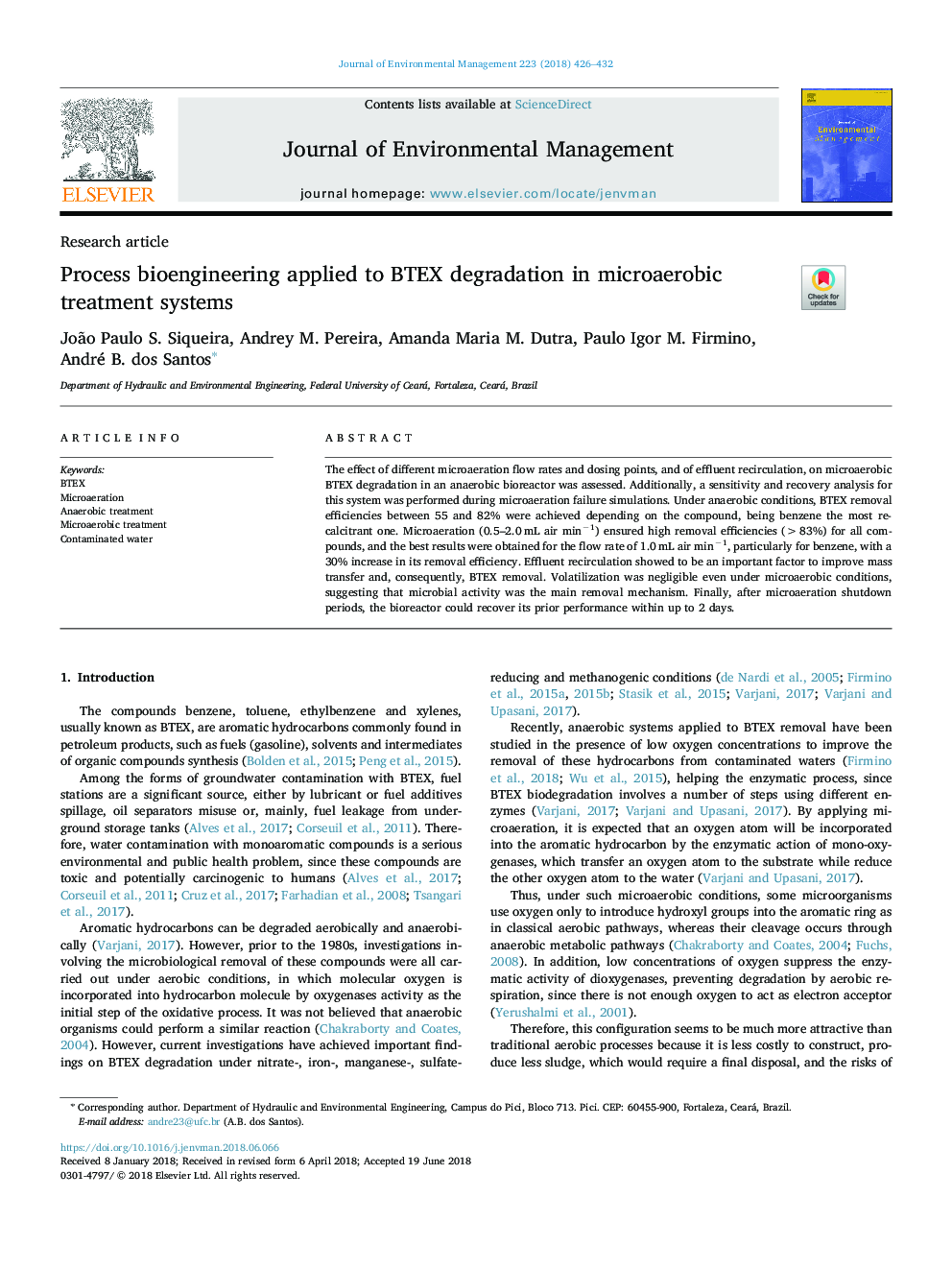| Article ID | Journal | Published Year | Pages | File Type |
|---|---|---|---|---|
| 7475908 | Journal of Environmental Management | 2018 | 7 Pages |
Abstract
The effect of different microaeration flow rates and dosing points, and of effluent recirculation, on microaerobic BTEX degradation in an anaerobic bioreactor was assessed. Additionally, a sensitivity and recovery analysis for this system was performed during microaeration failure simulations. Under anaerobic conditions, BTEX removal efficiencies between 55 and 82% were achieved depending on the compound, being benzene the most recalcitrant one. Microaeration (0.5-2.0â¯mL air minâ1) ensured high removal efficiencies (>83%) for all compounds, and the best results were obtained for the flow rate of 1.0â¯mL air minâ1, particularly for benzene, with a 30% increase in its removal efficiency. Effluent recirculation showed to be an important factor to improve mass transfer and, consequently, BTEX removal. Volatilization was negligible even under microaerobic conditions, suggesting that microbial activity was the main removal mechanism. Finally, after microaeration shutdown periods, the bioreactor could recover its prior performance within up to 2 days.
Related Topics
Physical Sciences and Engineering
Energy
Renewable Energy, Sustainability and the Environment
Authors
João Paulo S. Siqueira, Andrey M. Pereira, Amanda Maria M. Dutra, Paulo Igor M. Firmino, André B. dos Santos,
